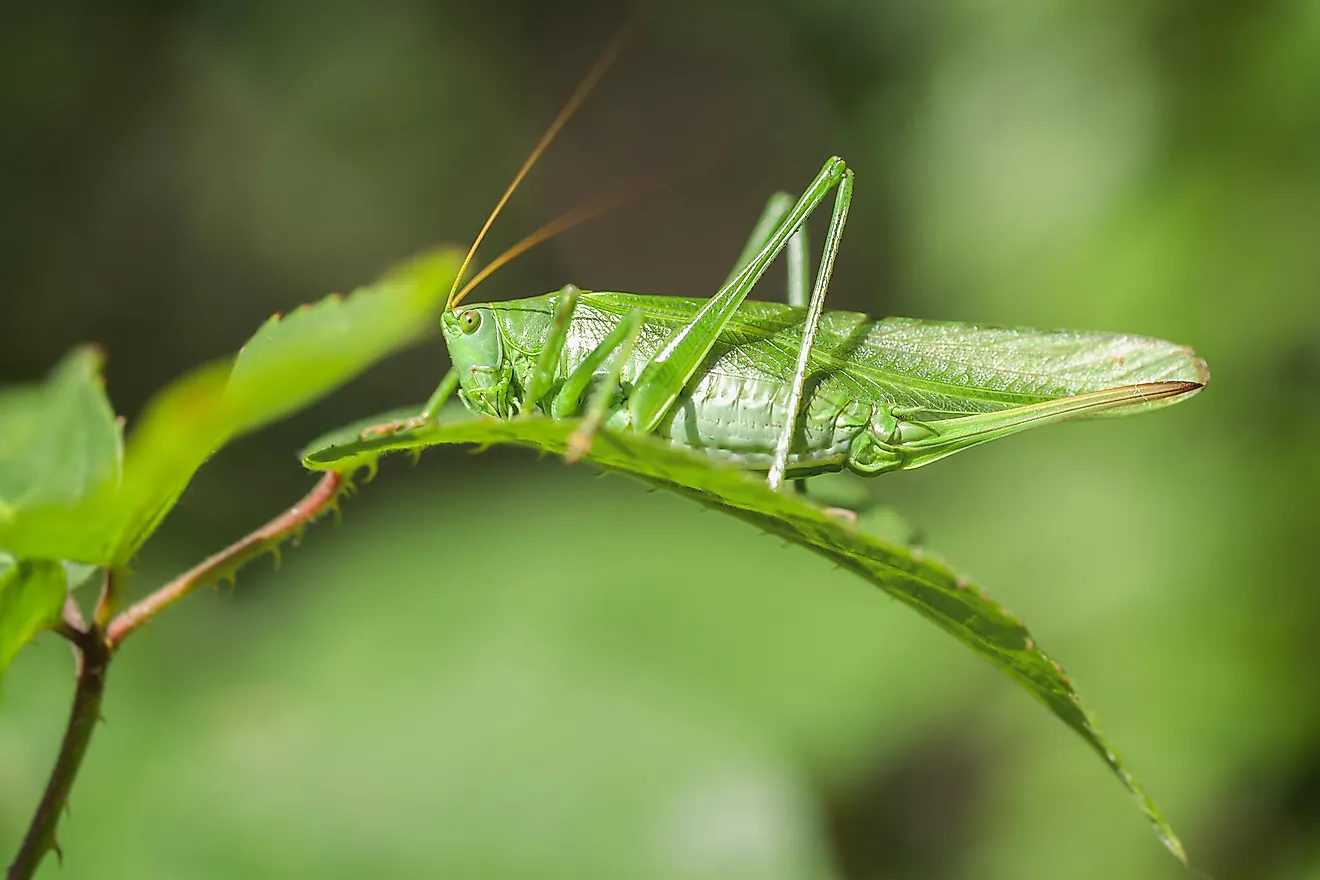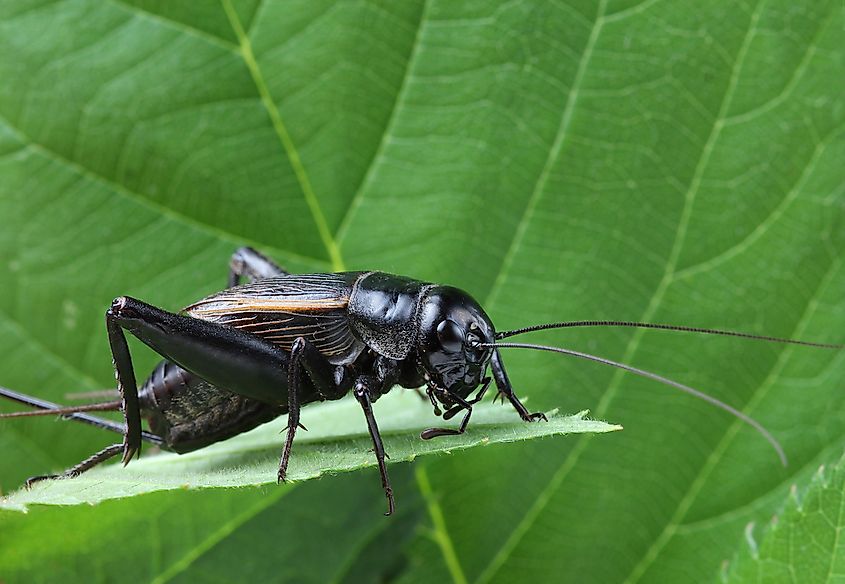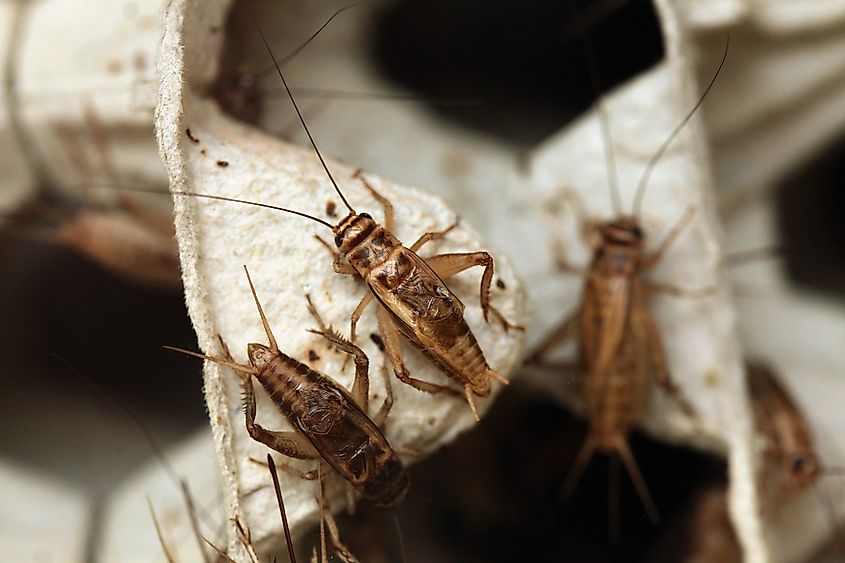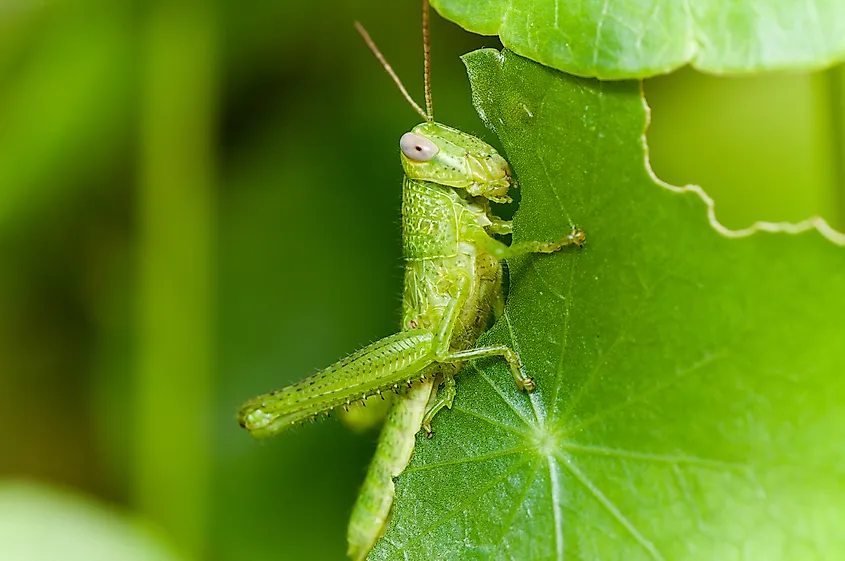What Are The Differences Between Crickets And Grasshoppers?

- Grasshoppers and crickets both sing but they do it in slightly different ways.
- Grasshoppers and crickets can both be omnivorous but grasshoppers are known to eat more plant material.
- Grasshoppers can be an invasive species in large numbers, and destroy crops en masse.
Insects can be a nuisance but they can also be wonderful additions to our lives. If you grew up near an open field, it can be hard to forget the soothing sound of crickets humming in the tall grass through an open window on a dark August evening. That natural symphony of sound can be an unquestionable reminder that there is a whole busy world out there moving to its own rhythm.
Crickets are unique creatures, but they can sometimes be mistaken for grasshoppers, and this is understandable. Both insects live in similar habitats, and share some characteristics. Both of these insects are from the order Orthoptera, and they share a common ancestor, along with katydids and locusts. Grasshoppers and crickets also have large hind legs which allow them to jump high and far.
These two insects do have some fundamental differences that set them apart, however. From the time of day they are active to their diet, how they make noise and more, grasshoppers and crickets are distinct insects.

A close up of black cricket on leaf. Image credit: Alexander Sviridov/Shutterstock.com
Size And Color
In general, crickets are smaller than grasshoppers, and their antennas are much longer in relation to their bodies. Crickets are usually some shade of brown, or black, whereas grasshoppers are famous for their bright green color that allows them to camouflage well on leaves. Grasshoppers also come in a wide range of bright colors including pink, blues, reds, and oranges, and some sport patterns that help them blend into their environments.
Grasshoppers are generally longer than crickets, and can grow to be up to two or three inches long (7cm). Crickets can measure less than 1 inch to 1 inches (3mm to 50mm).
Singing Method
Both grasshoppers and crickets make a singing noise with their bodies called stridulation. They do this to attract a mate, and how they do it differs. Grasshoppers rub their long hind legs against their wings to make a slight fluttering noise. Crickets rub their wings together directly, to create a chirping noise.

Potential Pests
Crickets do not usually procreate in such large numbers that they become a problem. They can be pests inside the home, but not often. Grasshoppers, on the other hand, can act like locusts and in large numbers they can do real damage to crops outside. When conditions are dry, natural vegetation does not grow as well, and in these times of drought, grasshoppers are known to move to cultivated crops to find food. When they do this, it can be a problem for farmers.
History tells of a time this happened in the US in 1931. Enormous swarms of grasshoppers were said to attack crops across the American heartland, causing widespread devastation. The grasshoppers ate large amounts of crops in Iowa, Nebraska, and South Dakota, at a time when drought was already making life hard for farmers. In fact, the swarms were reported to be so big that they blocked the sun from the sky. These hungry grasshoppers ate corn stalks to the ground, leaving fields completely bare of vegetation.
Today, insecticides are used to keep them from ruining corn crops and other vegetation across the world. Regions of North Africa and sections of the Middle East continue to have problems with both locusts and grasshoppers, however.
Active Time
Grasshoppers are diurnal insects, meaning they are active during the day, hanging out in dry, open grassy areas that are home to other low plants. Crickets, in contrast, are nocturnal, and are active at night, hiding in long grass, under logs, and in cool, damp spaces beneath rocks.
Diet

Crickets are scavenging meat-eaters who feed on dead or dying insects, and they also eat rotting plant matter so technically, they are omnivores. Crickets will also eat the eggs of other insects, as well as larvae and pupae.
Grasshoppers are more largely herbivorous and eat green leaves, grasses, plant stems, and flowers, while some can act as omnivores and eat animal protein as well. Both grasshoppers and crickets have been known to resort to cannibalism in dire circumstances.
Laying Of Eggs
Most grasshoppers lay their eggs on the ground. These eggs are deposited in the soil about ½ to 2 inches down in weedy areas, hay fields and grassy ditches. Crickets, for their part, prefer to lay their eggs in a location that is hidden from the male cricket, who will want to destroy them, ironically. Female crickets find a place that is quite warm for their eggs, ranging between 80 and 90° Fahrenheit. A female grasshopper will relocate her eggs often before they hatch, and their survival can depend on the female’s ability to successfully hide her eggs from the male father.
Cricket and grasshoppers are both chirping, hopping insects that you can find in the grass, and sometimes inside your home. Their persistence and successful designs make them one of the oldest insects now living on Earth.











